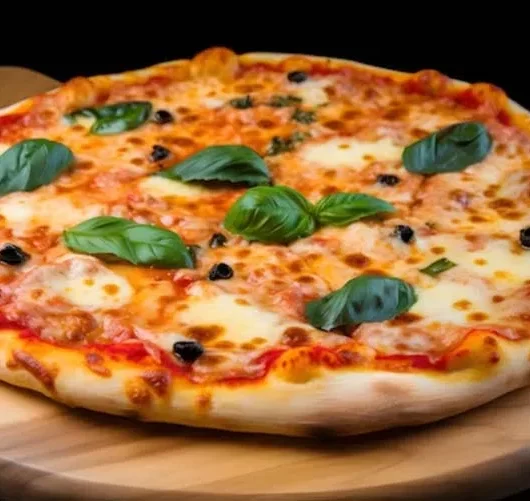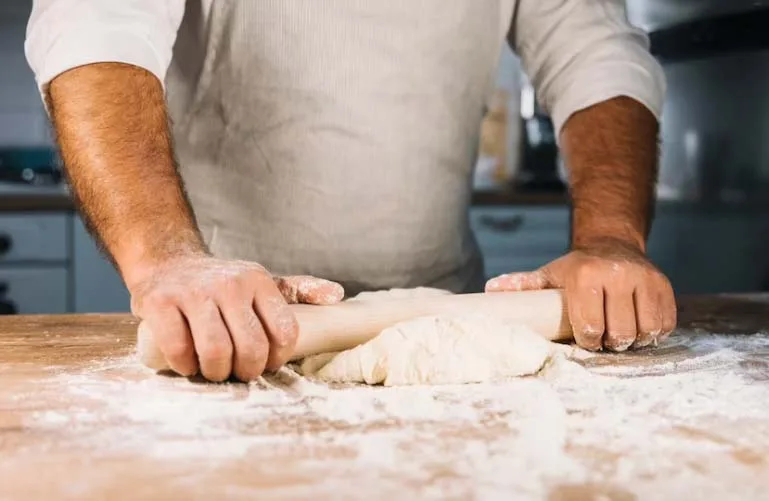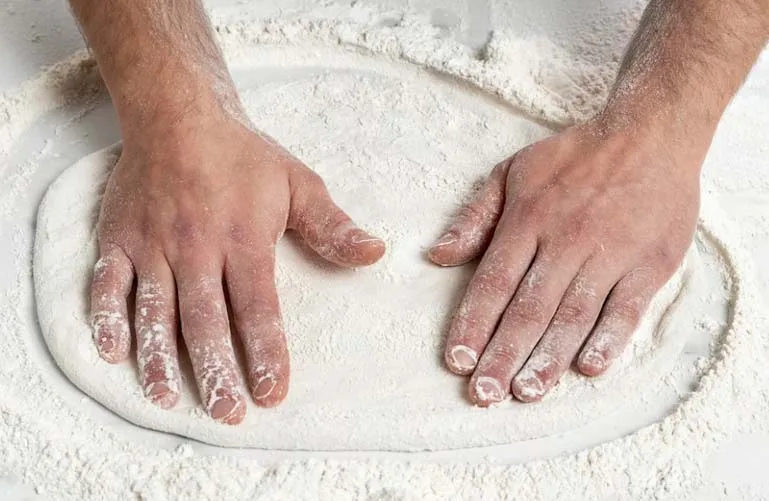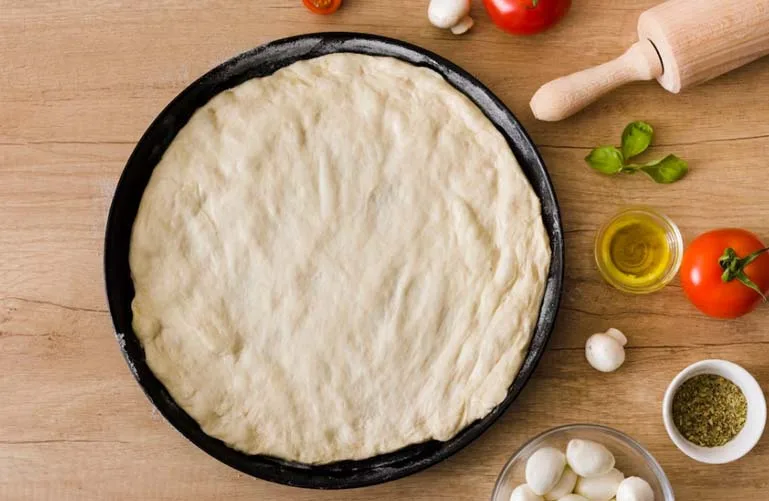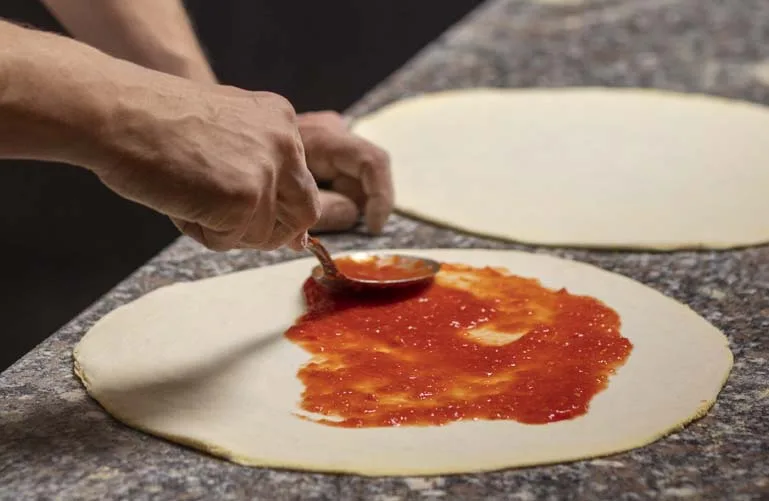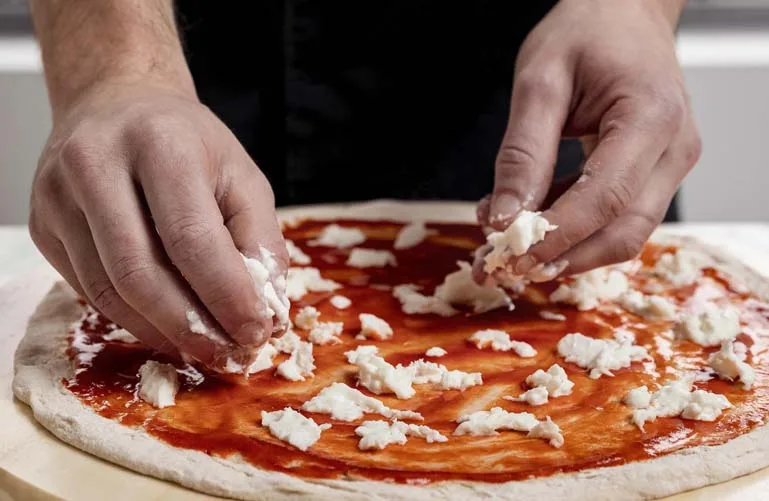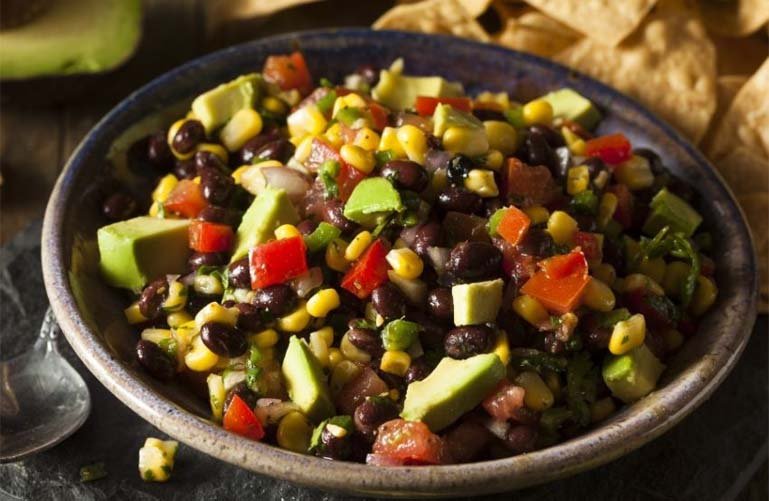This homemade pizza recipe is a delicious culinary creation that combines a soft, fluffy dough with a variety of flavorful toppings. From the base of the dough to the flavoring of the added ingredients, homemade pizza offers a personalized and comforting experience for the palate. It can be a quick and satisfying meal that suits different tastes and preferences.
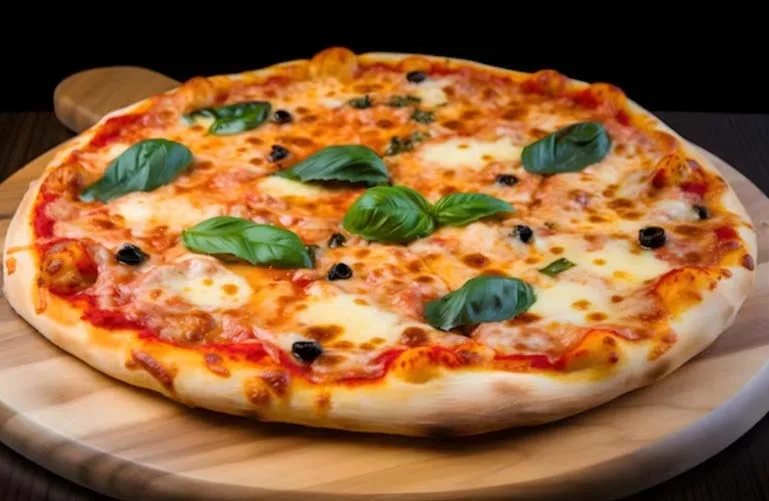
Eating homemade pizza and the reference to health
The health benefits of homemade pizza can vary depending on the ingredients and the choices made when preparing it. Here are some possible benefits:
- Balanced Nutrition: You can control the ingredients you use in homemade pizza, allowing you to balance the nutrients. You can add vegetables, lean proteins, and healthier cheese options to create a more nutritious pizza.
- Vegetable intake: Homemade pizza can be a great way to incorporate a variety of vegetables into your diet. Add toppings such as spinach, peppers, mushrooms, tomatoes and onions to increase the nutrient and fiber content.
- Calcium and protein: Depending on the ingredients you choose, such as mozzarella cheese and proteins such as chicken or fish, homemade pizza can provide a good source of calcium for bone health and protein for muscle repair and growth.
- Antioxidants: If you choose to use ingredients rich in antioxidants, such as tomatoes, black olives, or extra virgin olive oil, you can obtain antioxidant benefits that help combat oxidative stress and protect against chronic diseases.
- Pleasure and satisfaction: Enjoying a tasty, homemade meal can have emotional and psychological benefits, providing a feeling of satisfaction and pleasure.
However, it is important to remember that the health benefits of homemade pizza will depend on the topping choices and portions consumed. Control portion sizes, use quality ingredients, and balance your overall diet for optimal health benefits.
History of homemade pizza
Pizza is one of the most iconic and popular dishes in world cuisine, with a history dating back to ancient Rome, although the modern version we know today was developed in Italy. Here is a summary of his story:
- Background in Ancient Rome: Although it didn't look like modern pizza, there is evidence that ancient Romans consumed a type of flatbread topped with different toppings, such as olive oil, herbs, and cheese. This dish, known as “picea”, is considered by many to be the precursor of pizza.
- Development in Italy: The closest version to modern pizza originated in the city of Naples, Italy, during the 17th century. In this region, bakers began adding tomato, an ingredient brought from the New World, to their flatbreads. The addition of tomato gave a distinctive flavor to the dough and it soon became a popular dish among the local population.
- The Margherita: In 1889, the Margherita pizza, one of the most famous and classic pizzas, was created in honor of Queen Margaret of Savoy during a visit to Naples. This particular pizza was topped with tomato, mozzarella, and basil to represent the colors of the Italian flag: red, white, and green.
- International expantion: Pizza quickly became popular in Italy and eventually spread throughout the world through Italian emigration. In the 20th century, especially after World War II, pizza became a global phenomenon, especially in the United States, where the Italian community took it and adapted it to local preferences.
- Varieties and Adaptations: As pizza spread around the world, each region developed its own variations and styles of pizza. From the thin and crispy Neapolitan pizza, to the thick and fluffy Chicago-style pizza, to the creativity of gourmet pizzas with a wide range of toppings, pizza has evolved to adapt to local tastes and personal preferences.
In short, pizza is a dish with a rich and diverse history that has spread throughout the world, becoming a staple in the diet of many cultures and generations.
Maybe you might like: Zucchini and eggplant lasagna
Image credits: freepik

